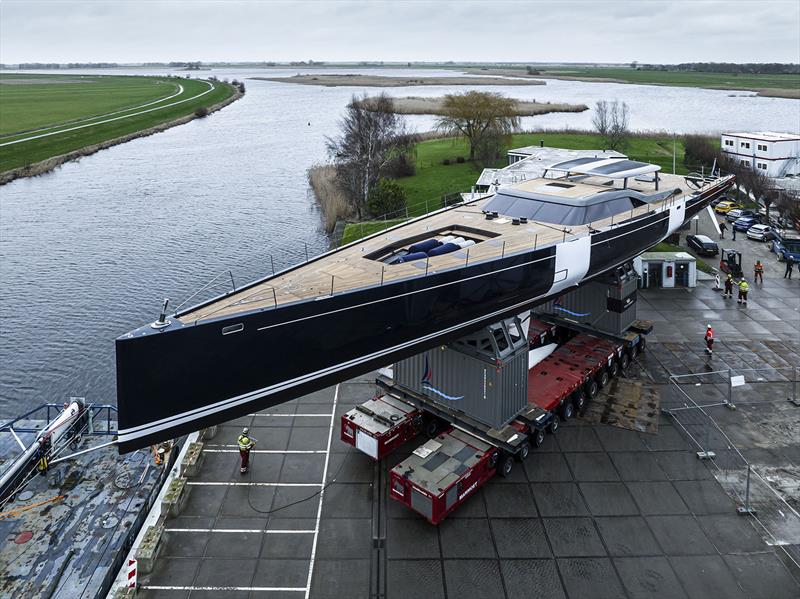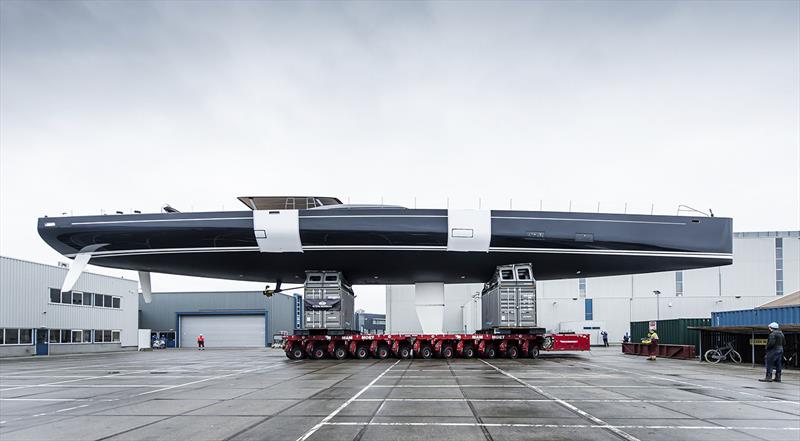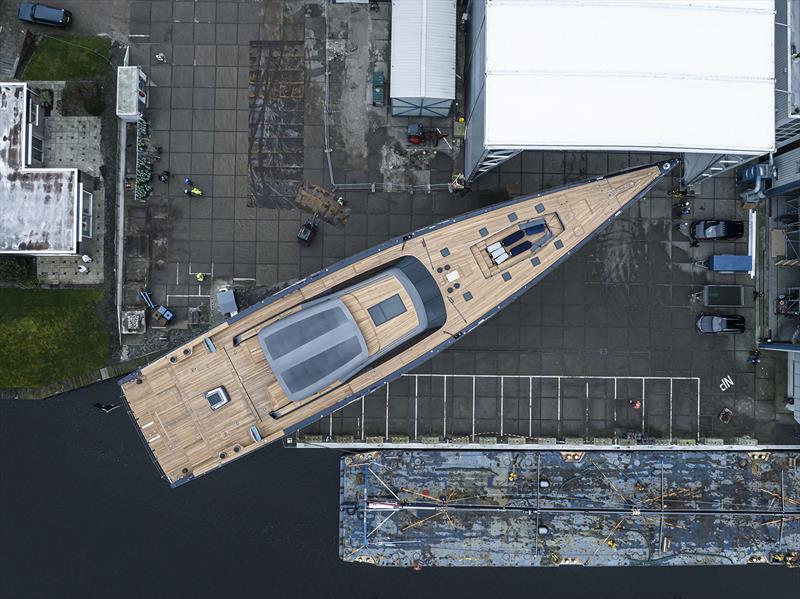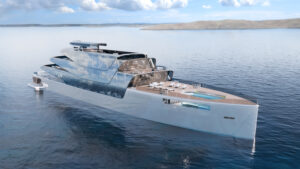Nilaya: 47m Royal Huisman sailing superyacht leaves shed

The 46.8m Royal Huisman sailing yacht Nilaya has been photographed for the first time, as the Panamax sloop rolled out of the Royal Huisman construction shed at the Dutch shipyard’s Vollenhove construction facility.
The aluminium superyacht will have now her masts stepped in Amsterdam before hitting the water later this year.
This superyacht is said to be the first to utilise Royal Huisman’s new Featherlight design and production method — which the firm says is “not a single process or construction technique but a holistic lightweight approach combining various weight-saving solutions… rooted in spacecraft technology.” The yard says Nilaya is the world’s lightest aluminium sailing superyacht for her length.

Continuous weight monitoring throughout the build of Project 405, aka Reichel / Pugh – Nauta 154, confirms the Dutch builder has achieved its goal of slicing 11 per cent of the weight of its typical advanced aluminium cruising yachts.
Importantly, Royal Huisman says it has reduced weight on the high-performance cruiser without sacrificing stiffness or cutting corners on quality.
Turning to the carbon fibre expertise of its sister company Rondal, Royal Huisman’s engineering team analysed and predicted which structural components would be best made of composites or aluminium. For example, the entire 17.5m coachroof and guest cockpit structure are carbon composite. Likewise, the recessed tender well on the foredeck is also carbon composite, as are a watertight bulkhead, crew entrance, twin rudders, the keel trunk and a cockpit bimini hardtop.

The carbon fibre mast, boom, and standing rigging — all standard on a high-performance cruiser — keep weight as low and as centred as possible for optimal balance.
Project 405 is also said to be the first yacht of this size range designed to take advantage of structured luff sail design pioneered by Doyle Sails, a choice that allowed the entire Rondal mast, rig, and components to be lighter — a key point considering her Panamax air draft.
To take advantage of the very narrow headsail sheeting angles possible, Rondal created a radical new curved carbon fibre spreader design that the firm claims is both shorter and more aerodynamic than anything previously available. Rondal also supplied new generation hybrid (carbon and aluminium) captive winches, hatches and various sail handling gear. Most deck hardware is titanium.
Nilaya‘s racy, low profile with its straight bow, wide transom, and twin rudders echoes the look of her owners’ previous highly successful maxi-racer of the same name. The vessel is from the boards of the same naval architecture and design firms, Reichel / Pugh and Nauta.
Nigel Ingram of MCM Newport serves as the owners’ project manager on the build. “While the new Nilaya is meant to take the owners world cruising, he also asked for a boat with all the ‘good habits’ of their previous racer, meaning responsiveness and excellent handling,” says Ingram. “Alustar aluminium is the right material for an advanced, quality superyacht for global cruising. It deals with noise better and is a better choice for cruising in comfort to remote locations.

“However, we also thought it was possible to build a lighter aluminium high-performance superyacht. Royal Huisman was not afraid to invest in research to explore and develop all manner of innovative weight-saving possibilities. They really chased the details.”
Nauta Design’s Mario Pedol adds that the choice of primary hull material has not fundamentally changed the yacht’s layout or total weight. “With Reichel / Pugh, we set the target weight. Royal Huisman really embraced the concept. It was a very good process, good collaboration.”
Royal Huisman Project 405 Nilaya will be delivered to its owners in the coming months.
Last year, Royal Huisman signed an order for an 85m sloop, which the company is calling a ‘revolutionary’ step into the future for superyachts. The vessel, currently known as Project 410, will also be the world’s largest sloop upon completion. Currently, that title is held by M5, a 77.6m sloop-rigged superyacht launched in 2003 in the UK as Mirabella V.










